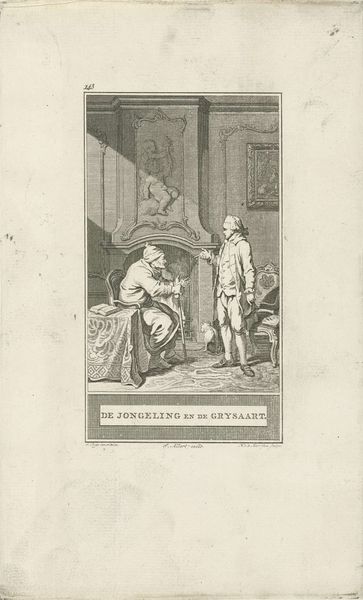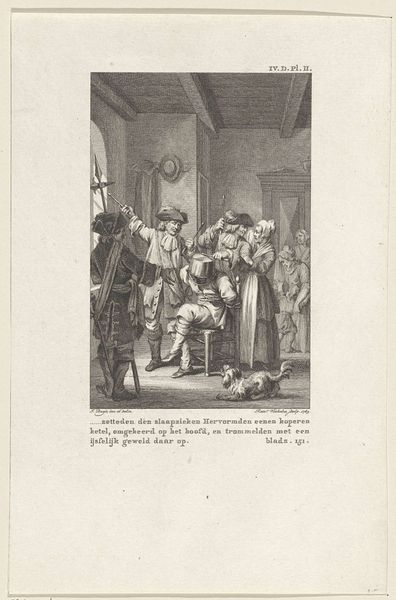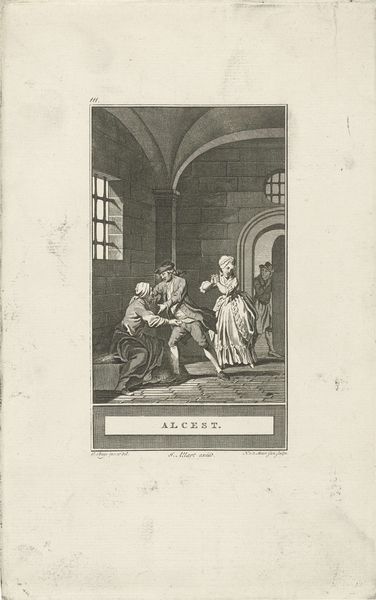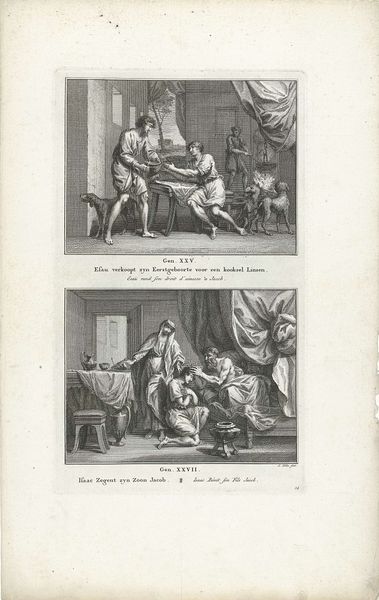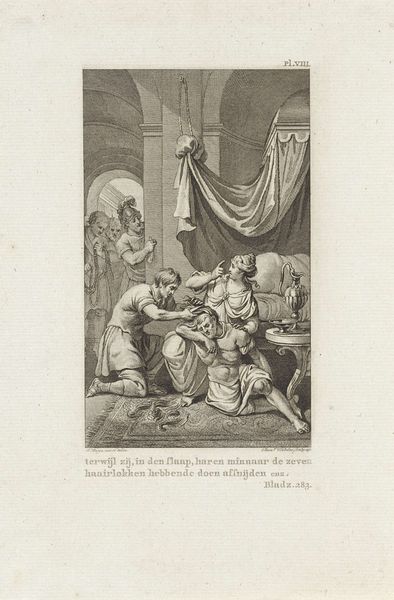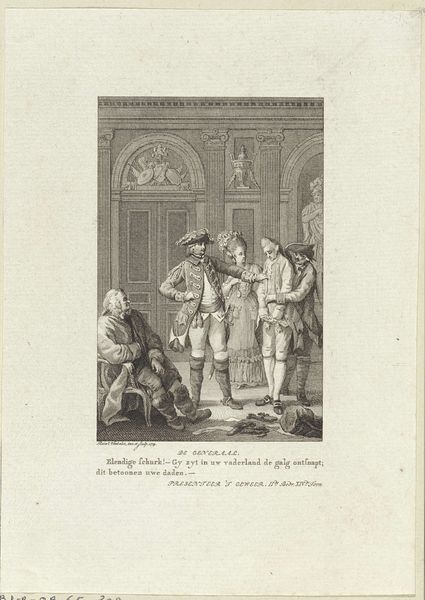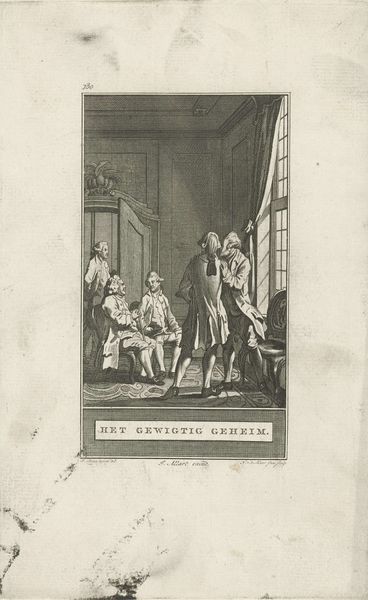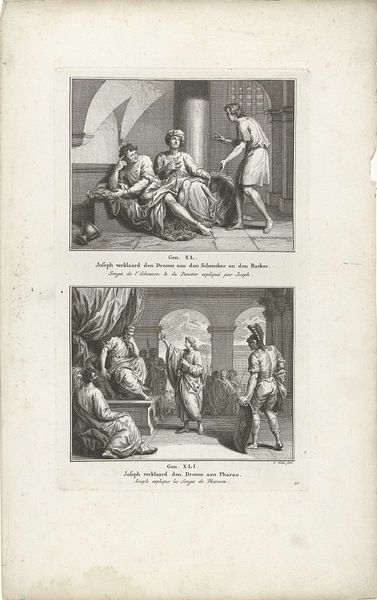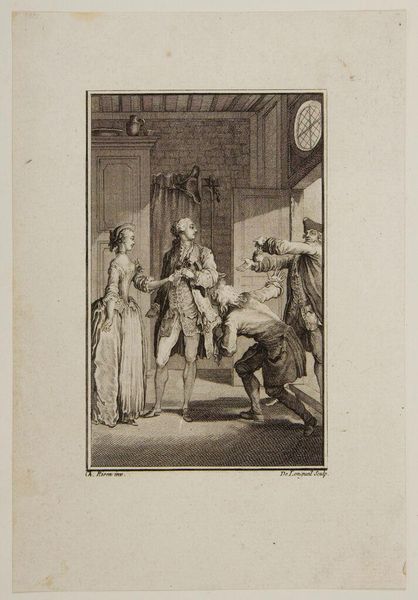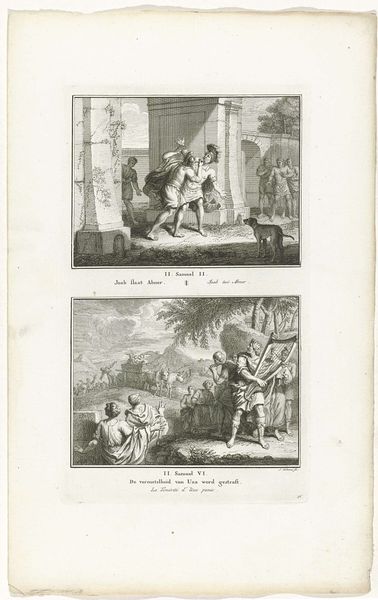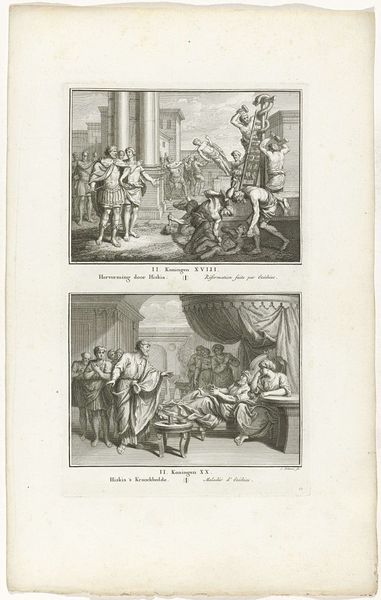
Dimensions: height 223 mm, width 147 mm
Copyright: Rijks Museum: Open Domain
Curator: Here we have "Jozef in de gevangenis," or "Joseph in Prison," an engraving from 1779 by Theodoor Koning. It depicts a scene of Joseph interpreting the dreams of two fellow prisoners. Editor: My first thought is that the engraving technique, with its reliance on line, gives it a somewhat detached and clinical feel, despite the obviously dramatic biblical narrative. It's as if we're viewing this scene through a pane of glass. Curator: Indeed. Koning's choice of engraving, a printmaking technique reliant on precise lines etched into a metal plate, emphasizes clarity and detail. Consider how this meticulous process echoes the seemingly ordained unfolding of the biblical narrative. There's a sense of predetermination etched into every line. The stark materiality of the engraving reflects the austerity of the prison, the limiting of physical existence and worldly power. Editor: It is interesting that you mention the metal plate and its physical impositions because it appears as if the figures themselves are bound not just by their confinement, but by a kind of artistic convention. I find myself wondering what that might convey? Are these characters also trapped by the narratives we create? Curator: That's a really astute observation! There's a certain formality to the composition; even in their distress, the figures are rendered with a classical sensibility. Think of the labor that went into creating this matrix, not unlike the way society forces certain molds onto us, dictating our roles. But Joseph, even within the prison walls, maintains a dignified stance. Editor: I agree. There's a distinct visual hierarchy at play here, reinforcing established power dynamics within this micro-society behind bars, where knowledge translates to influence, like being in the favor of royalty, the plate or matrix. It’s more than an image; it's an artifact of labor, etched with socio-religious meaning. Curator: Ultimately, Koning presents us with a powerful meditation on faith, fate, and the enduring human spirit, rendered through a technique that both defines and confines the narrative. Editor: Leaving us to reflect on the means through which these age-old narratives persist to instruct—and perhaps to cage—our own modern visions.
Comments
No comments
Be the first to comment and join the conversation on the ultimate creative platform.
